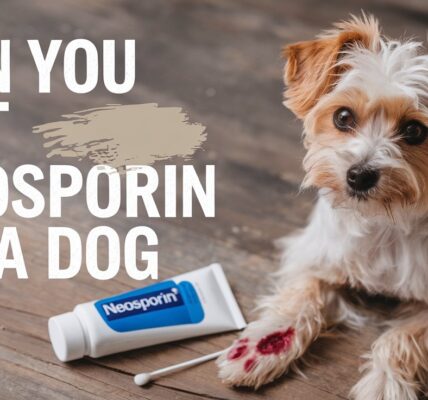How Often Should You Flea Your Dog?
Flea prevention is an essential part of maintaining your dog’s health and comfort. But how often should you flea your dog? The answer depends on various factors, including the type of flea treatment you use, your dog’s lifestyle, and the time of year. Let’s dive into everything you need to know about keeping those pesky parasites at bay.

Understanding the Importance of Flea Prevention
The Dangers of Fleas for Dogs
Fleas are very dangerous; they can pose serious health risks to your dog. Fleas can cause allergic reactions, transmit tapeworms, and even lead to anemia in severe infestations. They can also cause intense itching and discomfort, leading to secondary skin infections from excessive scratching. Therefore, flea prevention isn’t just about comfort—it’s about your dog’s overall health.
Common Signs Your Dog Has Fleas
Not sure if your dog has fleas? Look out for these common signs:
- Excessive scratching or biting at the skin.
- Red, irritated skin or scabs.
- Visible tiny black or brown spots (flea dirt) on the skin.
- Hair loss, especially around the tail or neck.
If you notice any of these signs, it’s crucial to take immediate action to prevent the infestation from worsening.
Factors That Influence Flea Treatment Frequency: How Often Should You Flea Your Dog?
Type of Flea Treatment Used
The frequency with which you need to flea your dog largely depends on the type of flea treatment you choose. Some treatments provide protection for a month, while others can last up to several months. Understanding the specific product’s duration is key to effective flea prevention.
Your Dog’s Lifestyle and Environment
Do you live in an area with a high flea population? Dogs that frequently explore parks, woods, or other outdoor areas may require more regular flea treatments than indoor dogs. Your environment also plays a role—humid and warm climates are ideal for fleas to thrive.
Seasonal Considerations
Flea activity tends to spike in warmer months, but depending on your location, fleas can be a year-round issue. In regions with mild winters, it’s essential to continue flea prevention throughout the year, while in colder climates, you might reduce the frequency during winter.

Types of Flea Treatments and Their Recommended Frequencies
Topical Flea Treatments
Topical flea treatments are applied directly to your dog’s skin, usually between the shoulder blades. These treatments work by spreading through the oils in your dog’s skin, killing fleas on contact.
How Often Should You Apply Topical Treatments?
Most topical treatments are designed to be applied monthly. However, always read the product’s instructions to ensure you’re following the recommended application schedule. Over-application can lead to skin irritation, while under-application may not provide effective flea control.
Oral Flea Medications
Oral flea medications are ingested by your dog and work by killing fleas from the inside out. These medications can be particularly effective for dogs with sensitive skin or allergies.
How Often Should You Give Oral Flea Medications?
Similar to topical treatments, most oral flea medications are administered monthly. However, some newer products offer protection for up to three months. Always consult with your veterinarian to determine the best product and frequency for your dog.
Flea Collars
Flea collars have been around for a long time and offer continuous protection by releasing active ingredients that repel or kill fleas.
How Often Should You Replace Flea Collars?
The effectiveness of flea collars can vary, with some lasting as little as three months and others providing up to eight months of protection. Check the product label for specific guidance, and be sure to replace the collar as soon as it loses effectiveness.
Natural Flea Repellents
For those looking for a more natural approach, there are various natural flea repellents available, such as essential oils and herbal sprays.
How Often Should You Use Natural Remedies?
Natural remedies typically require more frequent application, often on a weekly basis. While these can be less harsh on your dog’s skin, they may not provide the same level of protection as chemical treatments, especially in areas with a high flea population.

How to Effectively Monitor Your Dog for Fleas
Regular Physical Checks
Regularly check your dog’s skin and coat for fleas, especially around the neck, belly, and tail areas. Early detection can prevent a minor problem from turning into a full-blown infestation.
Using a Flea Comb
A flea comb is a simple yet effective tool for removing fleas and flea dirt from your dog’s coat.
When to Seek Professional Advice
If you’re struggling to control fleas despite regular treatments, it’s time to seek professional help. Your veterinarian can recommend alternative treatments or identify any underlying health issues that may be exacerbating the problem.

What to Do If Your Dog Has Fleas
Immediate Actions to Take
If you discover fleas on your dog, start treatment immediately. Bathe your dog with a flea shampoo and follow up with an appropriate flea treatment. Don’t forget to treat your home environment as well, as fleas can quickly spread to carpets, furniture, and bedding.
Treating Your Home Environment
Vacuum all areas where your dog spends time, including carpets, furniture, and bedding. Wash your dog’s bedding in hot water to kill any fleas or eggs. Consider using a household flea spray or fogger to eliminate fleas in your home.
Preventing Future Infestations
Consistent flea prevention is the best way to avoid future infestations. Stick to a regular treatment schedule and keep an eye out for any signs of fleas, especially during peak seasons.
Common Mistakes to Avoid in Flea Prevention: How Often Should You Flea Your Dog
Inconsistent Treatment
Skipping treatments or applying them irregularly can lead to a resurgence of fleas. Ensure you stick to the recommended schedule to keep fleas at bay.
Ignoring the Environment
Even if you’re diligent about treating your dog, fleas can still thrive in your home environment. Regularly clean and treat your home to ensure you’re not missing a crucial part of the prevention process.
Overlooking Your Dog’s Behavior
Changes in your dog’s behavior, such as increased scratching or restlessness, can be early signs of a flea problem. Don’t ignore these signals—check for fleas and take action if needed.
What happens if my dog is not flea and worm treated as often as it should?
If your dog is not treated for fleas and worms as often as recommended, several issues could arise:
Flea-Related Problems
- Infestation: Without regular flea treatment, your dog is at risk of developing a flea infestation. Fleas can multiply quickly, leading to discomfort for your dog and potentially spreading to your home.
- Health Risks: Fleas can cause allergic reactions, transmit tapeworms, and lead to anemia, particularly in puppies or smaller dogs. The constant itching and scratching can also result in skin infections.
- Increased Exposure: Even if your dog shows no immediate signs of fleas, untreated dogs are more likely to pick up fleas from the environment, other animals, or even from you after being outdoors.
Worm-Related Problems
- Internal Parasites: Worms, such as roundworms, hookworms, and tapeworms, can cause serious health issues if left untreated. These parasites can lead to weight loss, vomiting, diarrhea, and a lack of energy.
- Zoonotic Risk: Some worms can be transmitted to humans, particularly children, through contact with contaminated soil or feces. This can lead to serious health conditions like toxocariasis.
- Long-Term Damage: If worms are not treated, they can cause long-term damage to your dog’s organs, such as the intestines, heart, and lungs, and can even be fatal in severe cases.
How long can you wait between treatments? How Often Should You Flea Your Dog
The length of time you can wait between flea and worm treatments depends on the specific product you are using, as well as your dog’s lifestyle and environment. Here’s a general guideline:
Flea Treatments
- Topical Treatments: Most topical flea treatments, like spot-on solutions, are designed to be applied every 4 weeks (monthly). Waiting longer than this can reduce their effectiveness, leaving your dog vulnerable to fleas.
- Oral Flea Medications: Oral flea medications typically provide protection for a month, though some newer products offer up to 12 weeks of protection. You should administer the next dose according to the specific product’s instructions, generally every 4 to 12 weeks.
- Flea Collars: Depending on the brand, flea collars can last anywhere from 3 to 8 months. You should replace the collar as soon as it reaches the end of its effective period.
- Natural Remedies: Natural flea repellents, like essential oil sprays, may need to be applied weekly or even more frequently, depending on the product and your dog’s exposure to fleas.
Worm Treatments
- Routine Worming: For most dogs, worming treatments should be given every 3 months (quarterly). However, puppies and dogs with a higher risk of exposure may require more frequent treatment, such as monthly worming.
- High-Risk Environments: If your dog is in a high-risk environment—such as being around other animals, spending a lot of time outdoors, or frequently coming into contact with wildlife—they may need to be treated more often.

What Happens if You Wait Too Long?
If you wait too long between treatments, the protection provided by the previous dose will wear off, leaving your dog exposed to fleas or worms. This can result in infestations or infections that are harder to treat once established. Regular, timely treatments are the best way to ensure continuous protection for your dog.
Conclusion: How Often Should You Flea Your Dog

Jahanzaib Kaleem is a passionate and knowledgeable pet writer and veterinarian dedicated to enhancing the well-being of pets and educating pet owners around the world. With years of experience in veterinary medicine and a deep love for animals, Jahanzaib combines his medical expertise with a flair for writing to deliver insightful and practical advice on pet care.





















1 COMMENTS